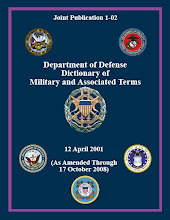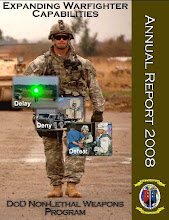1,000-pound, GBU-32 Joint Direct Attack Munition (JDAM) weapons. (Trying to
remember, didn't this cause you folks some problems back in 2007 or there abouts?) Something about a DOUBLE ENGINE FLAME OUT?
A key new weapon for the Lockheed Martin F-22 Raptor has started a new series of tests despite a recent in-flight crash scare.
The Boeing GBU-39 Small Diameter Bomb (SDB) began separation tests on the F-22 in early September after more than a year of sometimes difficult work to integrate the weapon in the weapons bay and carry out airborne captive carry tests, Maj Jack Fischer, a USAF test pilot, told the Society of Experimental Test Pilots' annual convention.
Flight tests so far have produced a few in-flight problems, including one particular event that "could have been very bad", Fischer said.
In that incident, an F-22 suffered a brief, dual-engine flameout while performing a negative-g, 360 degree roll with eight SDBs loaded in the weapons bay. The flameout occurred because the aircraft entered the maneuver with an incorrect trim setting.
Although the engines restarted before the pilot was even aware of the problem, the momentary power loss dropped the telemetry signals to the control room on the ground.
The control staff lost contact "with the aircraft pointed down toward the water at a very low altitude", said Capt Harris Hall, a programme official. "For a time, we thought the aircraft was lost."
However, the engines were restarted almost immediately and the pilot remained in control of the aircraft, he said. The pilot landed at Edwards AFB, California, without incident. The dual-engine flameout was not discovered until flight engineers reviewed performance data from the flight.
Integrating the 250lb (113kg)-class SDB is key to making the F-22 a more effective air-to-ground weapons platform, displacing two 2,000lb Joint Direct Attack Munitions with eight, "extreme stand-off" guided bombs in the internal weapons bay, Fischer said.
The F-22 dominates any adversary through unmatched performance: stealth, supercruise speed, agility, precision and a complete view of the battlespace achieved with the advanced sensor suite embedded in the aircraft. Operational Raptors are assigned to the 1st Fighter Wing at Langley AFB, Va. (27th and 94th Fighter Squadrons) first aircraft are scheduled for delivery to the 3rd Wing at Elmendorf AFB, Alaska (90th Fighter Squadron) later in the summer of 2007. Future Raptor bases include Holloman AFB, N.M., and Hickam AFB, Hawaii.
The US Air Force goal is to fly 381 aircraft, but the current program, reflected by the Quadrennial Defense Review includes only 183 on contract. 105 Raptors have completed final assembly at the Lockheed Martin facility in Marietta, Ga. Deliveries to the Air Force total 99 F-22s so far. Raptors are delivered at a rate of approximately one every six weeks. On November 12, 2008 the Pentagon approved $40 funding for four additional aircraft, under a $140 million budget approved by the US Congress to fund long-lead material for 20 additional aircraft. Decision whether to release the remaining budget is expected after the new administration is established, in January or February 2009. According to Aviation Week, initial indications from the new administrations hint on continued support for the Raptor program. Anticipating a potential cut in the near term, the USAF could negotiate reducing the total procurement to 250-275 Raptors. The Air force considers offsetting the decrease in numers by reducing aircraft deployed with each squadron from 24 to 18, allowing the Air Force to sustain seven fighter squadrons.
Let's IMAGINE AND SUPPOSE for a moment that this F22 which is, or about to be fully capable of delivering a NUCLEAR PUNCH was up there doing a SHOW OFF FLIGHT when there was a PROBLEM, maybe a FREAKING DOUBLE FLAME OUT...who could that pilot communicate with if there was something going HORRIBLY WRONG? Did he even get a chance to send out one last I Love You to his family?
The US Air Force evaluated plans to expand the aircraft missions, with possible fielding of a modified and enhanced F-22ER version but at present, its top priority is to get as many 'A' Raptors it can, seeking to get as close as possible to its 381 aircraft goal. Therefore, the current Raptor fleet is expected to go through incremental upgrades rather than a model change, such upgrades will include the integration of a new communications (datalink) enabling greater information sharing between F-22s and other aircraft and combatant commanders (currently, Raptors can share information only among themselves). These datalinks could be based on future enhancements of the AESA radar, which are expected to include datalink waveforms. Other options include the integration of Link 16 (which was removed from the original suite few years ago) or installation of TTNT.
A high priority is the introduction of AIM-9X short range heat-seeking air-to-air missiles. Although the Raptor has provisions for two AIM-9X missiles carried in the side weapons bay, they were not integrated yet into the system, as the Raptor relies on six AMRAAM missiles used primarily for BVR kills. When the Sidewinders will be included, pilots may reconsider the use of helmet mounted cueing system (JHMCS) which hasn't been included in the current avionics suite.
Expanding the aircraft ground support role, future upgrades are planned for the AN/APG-77 AESA radar, including the addition of synthetic aperture radar (SAR) mode, introduction of electronic attack and geolocation improvements to support Global Positioning System (GPS) guided weapon retargeting. Among the new weapons to be introduced is the GBU-39/40 Small Diameter Bomb. Currently, the aircraft carries ordnance only inside the weapon's bay to preserve its stealth characteristics. However, the Raptor has hardpoints (two per wing) which are currently cleared only for external fuel tanks. These could be used for external weapons carriage. Operational testing of these upgrades is scheduled to start in 2009 with fielding beginning in 2010































No comments:
Post a Comment